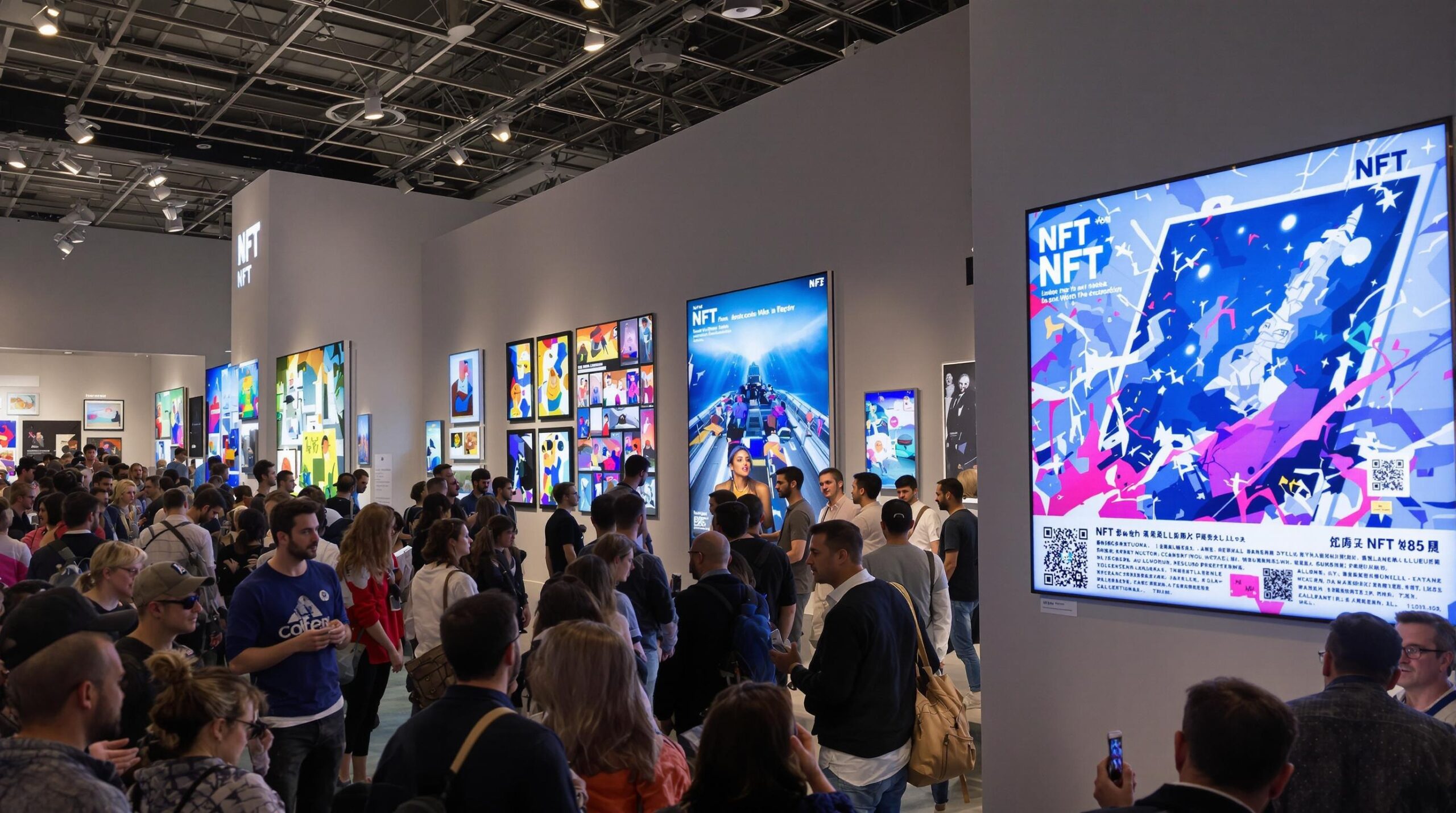Non-fungible tokens (NFTs) have taken the digital world by storm. With unique cryptographic elements, these digital assets authenticate ownership of digital products. Initially, NFTs were mainly associated with artworks, but their utility has expanded. Today, celebrities from diverse fields, including art, music, and sports, are backing NFTs. This growing trend is revolutionizing art ownership in digital spaces and capturing global attention.
Understanding NFTs and Their Rise
NFTs grant ownership and provenance of digital content like art, music, or virtual real estate. They utilize blockchain technology to ensure uniqueness and authenticity. This digitally-driven framework allows artists to monetize their art in new ways. Unlike traditional art markets, NFTs enable artists to sell directly to their audience through decentralized platforms.
The emergence of NFTs traces back to the invention of blockchain over a decade ago. However, they gained significant traction in 2020. The pandemic accelerated interest in NFTs as physical art exhibitions halted. Buyers and collectors turned to virtual spaces, surging interest and investment in NFTs. As the demand grew, celebrities from across the globe joined the trend.
How Celebrities are Shaping the NFT Space
Many celebrities view NFTs as a way to connect with fans beyond traditional mediums. They leverage their massive followings to create and sell NFTs, often commanding high prices. Musicians, for example, might release exclusive songs or artwork as NFTs.
Visual artists see similar benefits. High-profile celebrities offer their original digital artwork as NFTs, merging visual art and personal brand. By auctioning these NFTs, celebrities draw enormous attention and spark bidding wars. As a result, these sales often reach astronomical figures.
Sports figures also recognize NFTs’ potential. Through NFTs, athletes can offer fans unique experiences and memorabilia. For instance, fans might purchase digital trading cards or in-game assets as NFTs, adding a new fandom layer. This fusion of fandom and digital ownership plays a pivotal role in NFTs’ surging popularity.
The Impact on the Art Market
Celebrity-backed NFTs are reshaping the traditional contours of art ownership and consumption. Celebrities endorse NFTs by creating a new intersection between art, technology, and commerce. These star-studded endorsements attract a new demographic to the art world. People previously uninterested in art now see potential reasons to invest.
Moreover, the decentralized nature of NFT marketplaces challenges the dominance of conventional art institutions. Artists bypass galleries and auction houses, gaining greater control over pricing and distribution. This shift democratizes art ownership and increases artists’ profit margins. Blockchain tracking also ensures perpetual royalties, further benefiting artists.
Art collectors also see benefits in NFTs. Advanced authentication processes and provenance tracking assure buyers of the artwork’s authenticity. This feature significantly reduces fraud cases, which are prevalent in traditional art markets. As a result, collectors feel secure investing in high-value digital assets backed by renowned celebrities.
The Technical Backbone of NFTs
NFTs leverage blockchain technology, typically on the Ethereum network, to enable transactions. Each NFT carries a unique identifier, which differentiates it from other tokens. This technical structure ensures that NFTs cannot be duplicated, providing verified ownership.
Smart contracts embedded in NFTs automate royalty payments to the original creators on subsequent sales. This ensures that artists benefit financially from future resales. Innovative agreements are significant, providing ongoing compensation despite resale in secondary markets.
Blockchain’s transparency further boosts consumer confidence. Buyers and collectors can easily access transaction histories and ownership records. This open ledger system supports transparency and trust in decentralized marketplaces.
Challenges Facing Celebrity-backed NFTs
Despite the hype, celebrity-backed NFTs encounter several challenges. Critics point to environmental concerns, as blockchain operations demand high energy consumption. However, developers are actively working on solutions, like transitioning to eco-friendlier blockchains.
Another challenge surrounds market volatility. NFT values fluctuate dramatically, posing risks for investors. Some fear a speculative bubble due to overinflated prices and uninformed buying. This volatility demands cautious navigation for both creators and collectors.
Legal and copyright issues also pose potential hurdles. Existing laws around intellectual property must adapt to the NFT paradigm. As the legal landscape evolves, creators and purchasers must stay informed to avoid pitfalls. This learning curve can be steep, especially for newcomers.
The Future of NFTs in Digital Art Spaces
The burgeoning NFT ecosystem continues to evolve rapidly. As more celebrities endorse NFTs, their popularity seems poised to grow. This evolution will likely bring significant changes in the art world and beyond.
Innovation will define the future of NFTs. Developers focus on enhancing scalability and efficiency and improving user experience. Blockchains are evolving to offer faster transactions at lower costs, making it easier and more affordable for creators to enter the space.
Further collaborations between technology companies and artists can spark novel innovations. This interdisciplinary fusion could yield new digital art forms and experiences. As NFTs diversify, they have the potential to redefine not just art ownership but digital culture itself.
Conclusion
Celebrity-backed NFTs represent a paradigm shift in art ownership within digital spaces. By amalgamating art, technology, and celebrity influence, NFTs have captivated global audiences. While they present challenges, NFTs’ benefits and opportunities are substantial.
As blockchain solutions progress and more celebrities get involved, the NFT landscape will continue to expand. This revolution democratizes art creation and redefines participation and ownership dynamics.
With the right innovations and responsible practices, NFTs can remain a pivotal force for digital art in the future. Navigating this vibrant new world requires attention, understanding, and adaptability. Yet, NFTs offer unprecedented opportunities in modern digital platforms for those who engage wisely.


